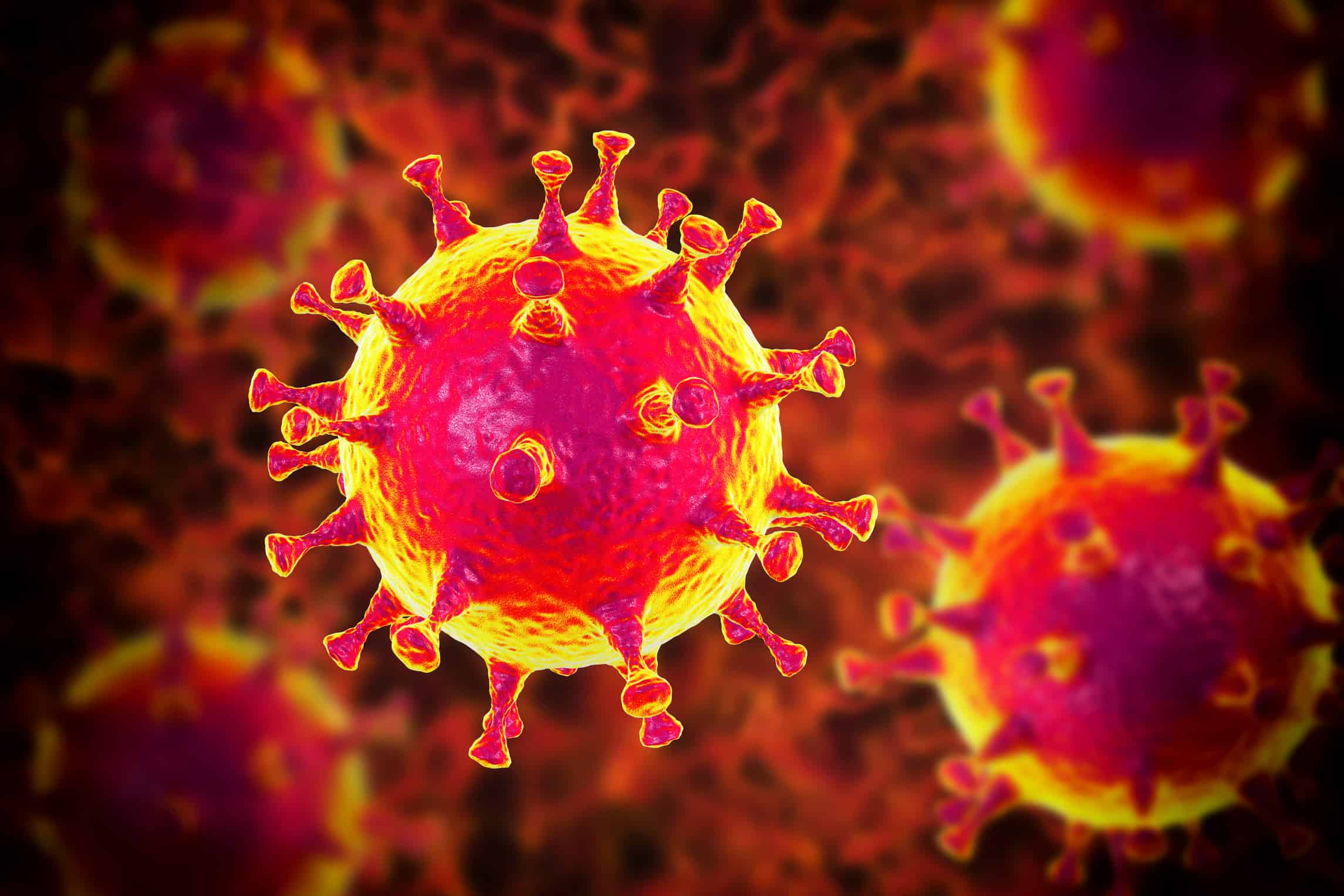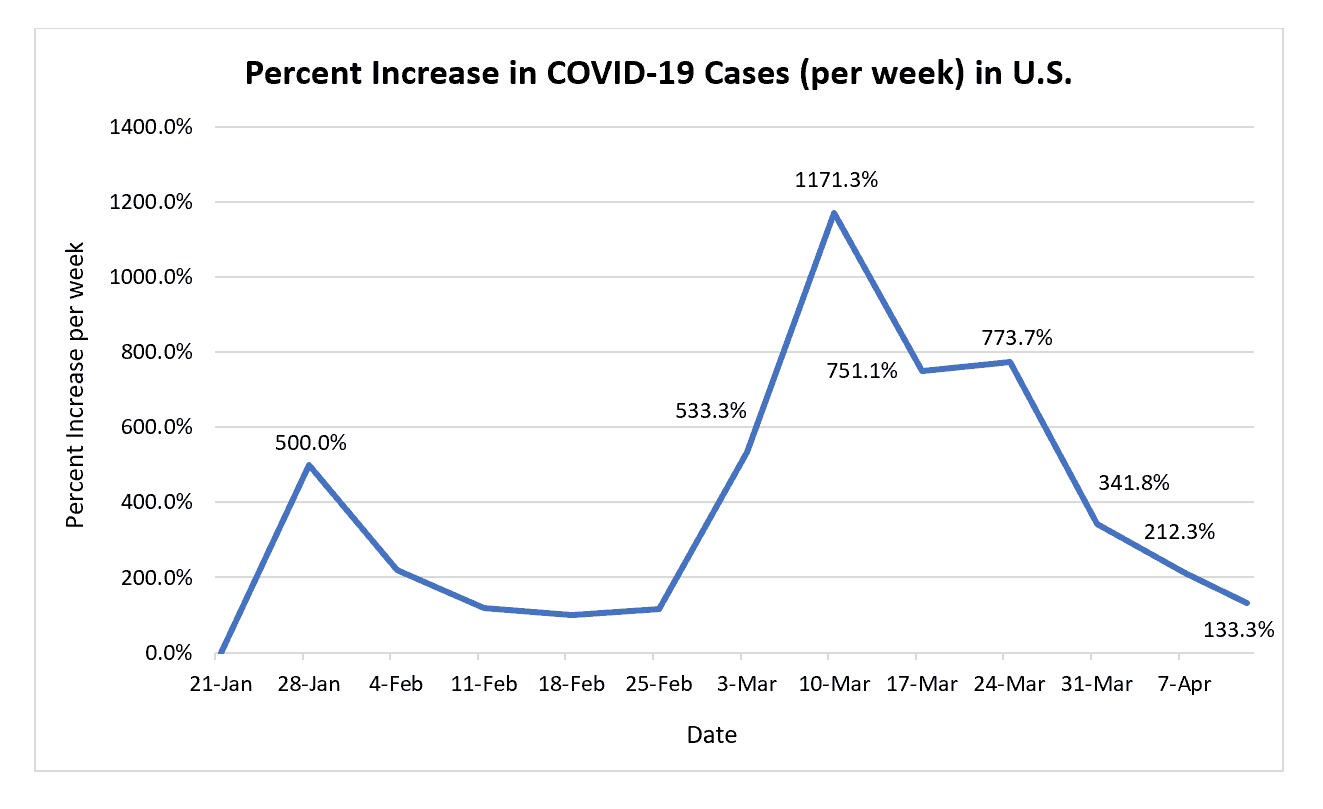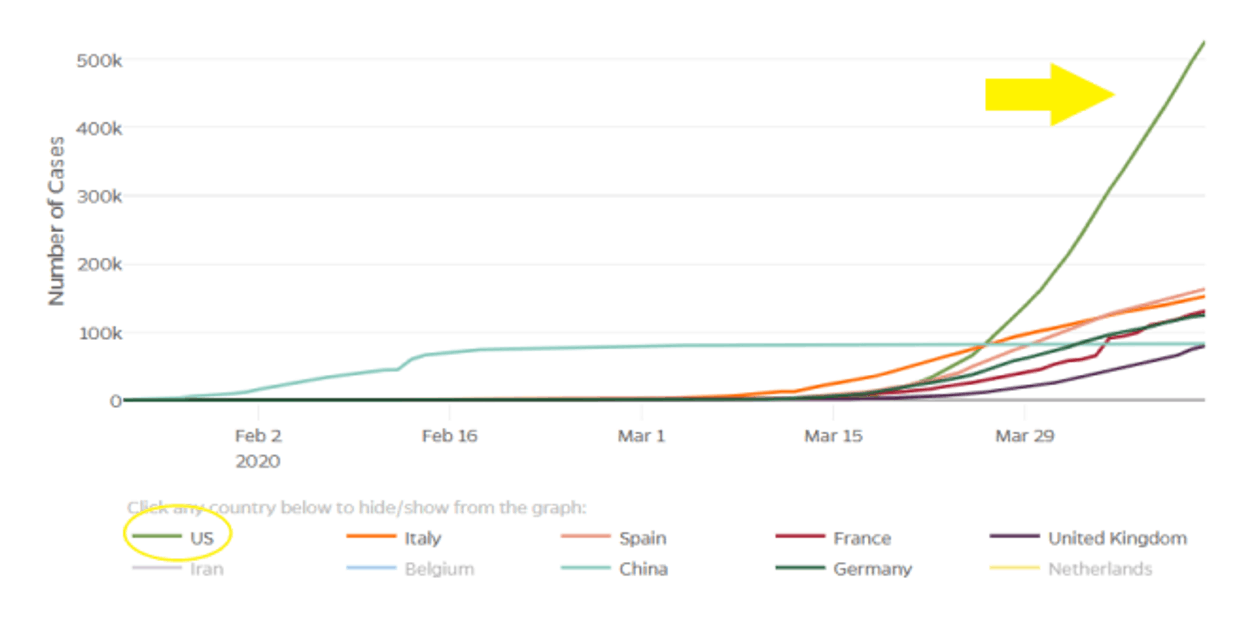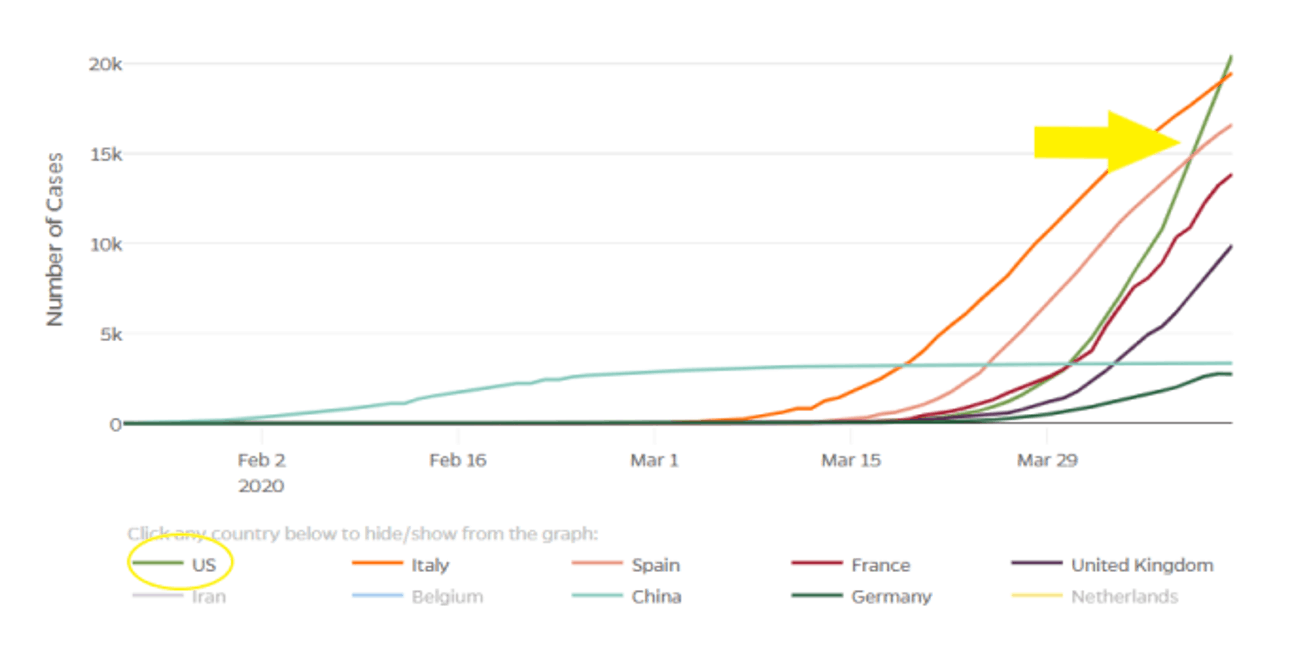COVID-19 A Look at What We Know:
By: Alex Pugliese
04.12.2020
Thanks to the efforts by scientists, public health researchers, and front-line responders, we have learned quite a bit about COVID-19 just within the last two months. Here is the latest information regarding the novel coronavirus and the COVID-19 pandemic:
Timeline of COVID-19:
A brief overview of how and when the COVID-19 pandemic reached the United States:
- December 31st, 2019: China reports a cluster of cases of pneumonia caused by an unidentified virus in the Wuhan, Hubei province 1.
It is now known, patients exhibiting similar symptoms were treated in Wuhan in early December possibly even in November 2.
- January 9th, 2020: A novel coronavirus is identified in causing these cases of respiratory illnesses. The complete genome is mapped by Chinese scientists. This information was then shared publicly three days later 3,4.
- January 22nd, 2020: The first case of the novel coronavirus in the United States is confirmed by the Centers for Disease Control and Prevention (CDC). The patient is a man in his 30s who lived in Washington State and had recently returned from Wuhan 4,5.
- February 4th, 2020: There are 11 cases of the novel coronavirus in the United States; essentially an eleven-fold (1,100%) increase in two-weeks 6.
- February 5th, 2020: The CDC begins shipping 2019 novel coronavirus diagnostic testing kits throughout qualified laboratories in the U.S 7.
- February 11th, 2020: WHO proposes a new name for the disease caused by the novel coronavirus, COVID-19 4.
- February 18th, 2020: There are 14 cases of COVID-19 in the U.S., which is a 27% increase in two weeks. It is worth noting that during this time, the CDC was the only entity in the U.S. providing screening kits and analyzing specimens. These kits were proven to be flawed and were subsequently recalled 6-8.
Positive cases for COVID-19 were certainly missed during this time.
- February 29th, 2020: The U.S. records its first COVID-19 related death 9.
- April 12th, 2020: Nearly 80 days after the first confirmed case was identified, there are now 526,396 cases with 20,463 deaths in the U.S 6,9,10.
Spread of the Virus:
This graph illustrates the spread of confirmed COVID-19 cases in the U.S. and where it currently stands 6:
What We Know About the Coronavirus:
- Symptoms for COVID-19 can range from 2-14 days after exposure; the medium time is approximately 5-6 days 11-13.
- This makes it very difficult to conduct surveillance and “contain” the virus in areas.
- Among cases, approximately 80-85% experience mild to moderate symptoms. 15% experience severe symptoms that require hospitalization and about 5% require intensive care 11-13.
- Older adults (65+ years old) and those with underlying health conditions (cardiovascular disease, diabetes, etc.) are at the highest risk of experiencing severe symptoms and death 11.
- It is hypothesized among those infected with COVID-19, the true number of cases, 10% to 50% are asymptomatic 14,15.
- Although those infected are asymptomatic, they are shedding the virus at high levels and are considered contagious 15.
- This makes the need wide-spread antibody testing even more necessary.
- This could help explain how the virus spreads so quickly, particularly in high-density areas. It makes community spread that much more likely.
- COVID-19 is quite contagious and easy to transmit. The reproductive number (R0) is believed to be approximately 2.28, possibly closer to 2.5 16.
- For comparison, the seasonal flu has a R0 of 1-1.3. Here is an illustration to put that difference into perspective 17. This shows the number of cases that could occur in both the flu and COVID-19 over the course of “10 generations”:
Where Things Currently Stand:
- As of April 12th, there are 526,396 confirmed cases of COVID-19 and a reported 20,463 COVID-19 related deaths in the U.S 6,9,10.
- Here is a visual representation showing how the U.S. compares to other countries in confirmed cases of COVID-19 10:
- The current case fatality rate in the U.S. is approximately 3.9% 10.
- Represents the percentage of deaths among those who are confirmed to have tested positive for COVID-19.
- It is likely that the true case fatality rate is lower as screening has been prioritized for symptomatic patients. Those who are symptomatic or presumed to be infected but haven’t been tested are most likely excluded from the total number of COVID-19 cases.
- The rate of death for COVID-19 in the U.S. is 6.5 per 100,000 people 10.
-
- For comparison, these are the rates observed in other countries:
-
-
- Spain – 35.5
- Italy – 32.2
- France – 20.7
- K. – 14.9
- Germany – 3.3
- China – 0.24
-
- Here’s a visualization of this data 10:
- The rates of hospitalizations (per 100,000) by age-group in the U.S. as of April 11th, 2020 18:
- 0-4 years – 0.6
- 5-17 years – 0.2
- 18-49 years – 6.3
- 50-64 years – 20.7
- 65+ years – 38.7
- There are conflicting numbers regarding cases by age group and race/ethnicity on the national level. More accurate numbers may be provided at the State and County level. Hopefully, this will be looked into more in the coming weeks.
Reference:
- World Health Organization. (2020, January 5). Emergencies preparedness, response: Pneumonia of unknown cause – China. Retrieved on April 11, 2020, from https://www.who.int/csr/don/05-january-2020-pneumonia-of-unkown-cause-china/en/4
- Huang, C., Wang, Y., Li, X., Ren, L., Zhao, J., Hu, Y., … Xiao, Y. (2020). Clinical features of patients infected with 2019 novel coronavirus in Wuhan, China. The Lancet, 395(10223), 497–506. https://doi.org/10.1016/S0140-6736(20)30183-5
- World Health Organization. (2020, January 12). Emergencies preparedness, response: Novel Coronavirus – China. Retrieved on April 11, 2020, from https://www.who.int/csr/don/12-january-2020-novel-coronavirus-china/en/
- World Health Organization. (2020, April 8). WHO Timeline – COVID-19. Retrieved April 11, 2020, from https://www.who.int/news-room/detail/08-04-2020-who-timeline—covid-19
- Rabin, R. C. (2020, January 21). First Patient With Wuhan Coronavirus Is Identified in the U.S. The New York Times. Retrieved on April 11, 2020, from https://www.nytimes.com/2020/01/21/health/cdc-coronavirus.html
- Centers for Disease Control and Prevention. (April 2020). Coronavirus Disease 2019: Cases in the US. Retrieved from April 12, 2020, from https://www.cdc.gov/coronavirus/2019-ncov/cases-updates/cases-in-us.html
- Centers for Disease Control and Prevention. (2020, February 6). CDC Newsroom: Shipping of CDC 2019 Novel Coronavirus Diagnostic Test Kits Begins. Retrieved from April 12, 2020, from https://www.cdc.gov/media/releases/2020/p0206-coronavirus-diagnostic-test-kits.html
- Centers for Disease Control and Prevention. (2020, February 12). CDC Newsroom: Transcript for CDC Telebriefing: CDC Update on Novel Coronavirus. Retrieved from April 11, 2020, from https://www.cdc.gov/media/releases/2020/t0212-cdc-telebriefing-transcript.html
- Centers for Disease Control and Prevention. (April 2020). Coronavirus 2019 (COVID-19) Surveillance: Provisional Death Counts for Coronavirus Disease (COVID-19). Retrieved from April 12, 2020, from https://www.cdc.gov/nchs/nvss/vsrr/COVID19/
- Johns Hopkins University and Medicine. (April 2020). Coronavirus Resource Center: Mortality Analyses. Retrieved from April 12, 2020, from https://coronavirus.jhu.edu/data/mortality
- Centers for Disease Control and Prevention. (March 2020). Coronavirus Disease 2019: Symptoms. Retrieved from April 11, 2020, from https://www.cdc.gov/coronavirus/2019-ncov/symptoms-testing/symptoms.html
- World Health Organization. (2020, April 8). WHO Newsroom: Q&A on coronaviruses (COVID-19). Retrieved April 11, 2020, from https://www.who.int/news-room/detail/08-04-2020-who-timeline—covid-19
- Li, Q., Guan, X., Wu, P., Wang, X., Zhou, L., Tong, Y., … Tu, W. (2020). Early Transmission Dynamics in Wuhan, China, of Novel Coronavirus–Infected Pneumonia. The New England Journal of Medicine, 382(13), 1199–1207. https://doi.org/10.1056/NEJMoa2001316
- Du, Z., Xu, X., Wu, Y., Wang, L., Cowling, B., Meyers, L., & Du, Z. (2020). Serial Interval of COVID-19 among Publicly Reported Confirmed Cases. Emerging Infectious Diseases, 26(6). https://doi.org/10.3201/eid2606.200357
- Li, R., Pei, S., Chen, B., Song, Y., Zhang, T., Yang, W., … Li, R. (2020). Substantial undocumented infection facilitates the rapid dissemination of novel coronavirus (SARS-CoV2). Science (New York, N.Y.). https://doi.org/10.1126/science.abb3221
- Zhang, S., Diao, M., Yu, W., Pei, L., Lin, Z., & Chen, D. (2020). Estimation of the reproductive number of novel coronavirus (COVID-19) and the probable outbreak size on the Diamond Princess cruise ship: A data-driven analysis. International Journal of Infectious Diseases, 93, 201–204. https://doi.org/10.1016/j.ijid.2020.02.033
- (2020, April 1). Coronavirus is not the flu. It’s worse. YouTube. https://www.youtube.com/watch?v=FVIGhz3uwuQ
- Centers for Disease Control and Prevention. (April 2020). The Coronavirus Disease 2019 (COVID-19)-Associated Hospitalization Surveillance Network (COVID-NET). Retrieved from April 12, 2020, from https://gis.cdc.gov/grasp/COVIDNet/COVID19_3.html







